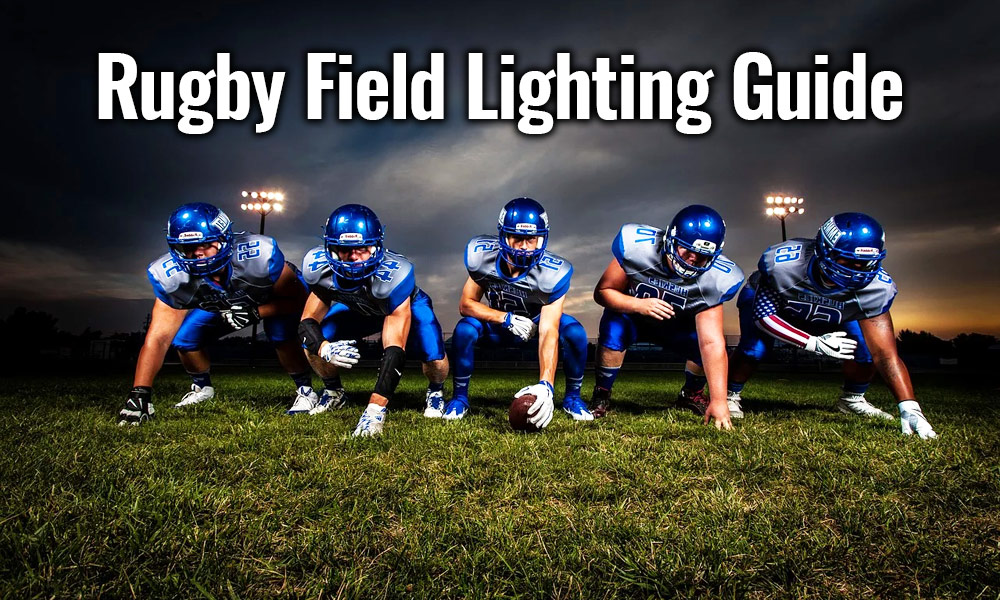
Rugby field lighting is an important part of a rugby game, and it is of great significance to a rugby game. Rugby field lighting is an important part of rugby field design, and it is more complicated. It must not only meet the requirements for athletes to play and watch the audience, but also to meet the requirements of color temperature, illuminance, and uniformity of illumination on live television broadcasts. This requirement is much higher than that of athletes and spectators. In addition, the way of lighting the lamps should be closely matched with the overall plan of the rugby stadium and the structure of the stands. Especially the maintenance of lighting equipment is closely related to the architectural design. Full consideration is needed.
Rugby pitch Lighting Standard
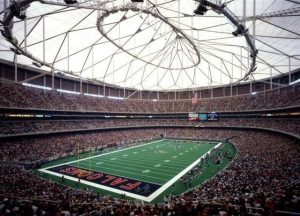
The lighting of the rugby field has increased the area where lamps cannot be arranged, which is intended to protect athletes and referees from the effects of glare. The installation position, height and aiming angle of the lamp should meet the requirements of reducing glare and controlling interference light. In addition to glare to athletes and spectators, lamps can also produce glare off the field. But do not shine light on the roads or residential areas around the court. When there is a TV broadcast, the space within a 15 ° angle on both sides of the bottom line; the lighting arrangement of the TV broadcast competition venue shall meet the requirements of vertical illumination and uniformity of the main and auxiliary cameras. In fact, the number of lamps is related to the number of auditoriums in the stadium. Comparatively speaking, training venues only need to install simple lamps; large stadiums need to install more LED stadium lamps, and control the beam to achieve high illumination and low glare. When there is no TV broadcast, the space within 10 ° on each side of the bottom line. Generally, the light-belt arrangement uses a combination of several types of projectors with different beam angles. Narrow beams are used for long-range projection, and medium beams are used for near-field projection. The disadvantages of the light strip arrangement are: the technology required to control the glare is relatively strict, and the physical sense of the object is slightly worse.
1. Illumination requirements
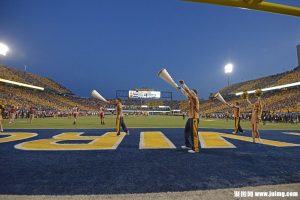 Rugby fields have different requirements for illumination due to their different uses. Training and entertainment horizontal illumination 200lx, amateur competition 300lx, professional ratio 500lx, on top of this there are TV broadcasts with higher vertical illumination, broadcast domestic competition 1000lx, international competition 1400lx, high-definition HDTV broadcast 2000lx, different illumination to meet different Competition requirements!
Rugby fields have different requirements for illumination due to their different uses. Training and entertainment horizontal illumination 200lx, amateur competition 300lx, professional ratio 500lx, on top of this there are TV broadcasts with higher vertical illumination, broadcast domestic competition 1000lx, international competition 1400lx, high-definition HDTV broadcast 2000lx, different illumination to meet different Competition requirements!
2. Color rendering requirements
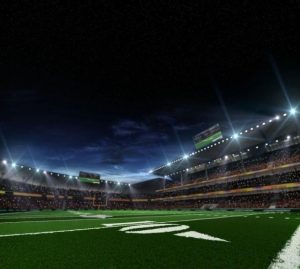 High color rendering and strong light directivity; good dimming performance, no visual error occurs when the color temperature changes; cold light source has low heat, and can be safely touched; these are not reachable by incandescent and fluorescent lamps. It can not only provide a comfortable light space, but also can well meet the needs of people’s physical health. It is a healthy light source that protects vision and is environmentally friendly. Does not produce harmful ultraviolet light, especially suitable for cultural relics, pharmaceutical display lighting. LED lights have good color rendering. Good color rendering means that the color of objects under this light is closer to the color under noon daylight. The three-primary color water-coated phosphor tube should be selected to filter out more ultraviolet light, which has a long life and high color rendering, which is 30% brighter than ordinary fluorescent lamps and has a color rendering as high as 80.2. The degree of glare produced by the lamp depends on the Density, projection direction, quantity, position viewed in the arena, ambient brightness, etc.
High color rendering and strong light directivity; good dimming performance, no visual error occurs when the color temperature changes; cold light source has low heat, and can be safely touched; these are not reachable by incandescent and fluorescent lamps. It can not only provide a comfortable light space, but also can well meet the needs of people’s physical health. It is a healthy light source that protects vision and is environmentally friendly. Does not produce harmful ultraviolet light, especially suitable for cultural relics, pharmaceutical display lighting. LED lights have good color rendering. Good color rendering means that the color of objects under this light is closer to the color under noon daylight. The three-primary color water-coated phosphor tube should be selected to filter out more ultraviolet light, which has a long life and high color rendering, which is 30% brighter than ordinary fluorescent lamps and has a color rendering as high as 80.2. The degree of glare produced by the lamp depends on the Density, projection direction, quantity, position viewed in the arena, ambient brightness, etc.
Anti-glare: The anti-glare system used in the lamps and lanterns uses a very developed anti-glare system, and it will not be dazzled by the light exposure. Effectively prevent external light and glare, minimize the amount of light shining outside the field, protect the beautiful night sky, and provide rugby and stadium lighting for athletes and spectators, creating a more comfortable competitive and viewing environment.
Rugby pitch lighting layout
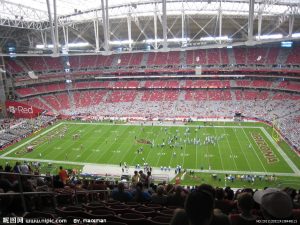 1. Multi-pole layout
1. Multi-pole layout
Rugby field lighting multi-pole arrangement type is to set multiple groups of light poles on both sides of the field. Its outstanding advantages are lower power consumption and better vertical and horizontal illumination. Due to the lower light pole, this type of cloth lamp also has the advantages of less investment and convenient maintenance. Rugby field lighting light band arrangement is another form of two-side arrangement, that is, the lamps are arranged in rows on both sides of the court to form a continuous light band lighting system. The light strip light illuminates uniformly, and the brightness between the athlete and the rugby field is better. At present, it is generally recognized that this type of light can meet the requirements of color TV broadcast, HD TV broadcast and even ultra HD TV broadcast.
2. Hybrid layout
Advantages of mixed lighting the mixed arrangement of rugby field lighting has the advantages of two kinds of cloth lights, which enhances the physical sense. The vertical illuminance and uniformity in the four directions are more reasonable, but the degree of glare is increased. At this time, the four corners are often not set independently, but are unified with the building structure, so the cost is relatively low.
3. Strip layout
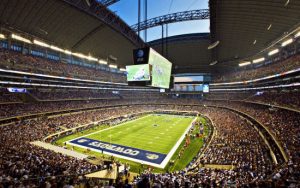 Light strip arrangement is another form of arrangement on both sides, that is, the lamps are arranged in rows on both sides of the court to form a continuous light strip lighting system. The light strip light illuminates uniformly, and the brightness between the athlete and the court is better. At present, it is generally recognized that this type of light distribution can meet the requirements of color TV broadcast, high-definition television broadcast and even ultra-high-definition television broadcast. The length of the light strip for the rugby stadiums of Grade A and Super Class, the length of the light strip is generally not less than 180m, and the projection angle of the lamps should not be less than 25 °. In some rugby stadiums, the lighting of the light strip is very close to the sideline of the field (its included angle is above 65 °), and the side of the field that is closer to the light strip cannot obtain sufficient vertical illuminance, which will increase the rear lighting system.
Light strip arrangement is another form of arrangement on both sides, that is, the lamps are arranged in rows on both sides of the court to form a continuous light strip lighting system. The light strip light illuminates uniformly, and the brightness between the athlete and the court is better. At present, it is generally recognized that this type of light distribution can meet the requirements of color TV broadcast, high-definition television broadcast and even ultra-high-definition television broadcast. The length of the light strip for the rugby stadiums of Grade A and Super Class, the length of the light strip is generally not less than 180m, and the projection angle of the lamps should not be less than 25 °. In some rugby stadiums, the lighting of the light strip is very close to the sideline of the field (its included angle is above 65 °), and the side of the field that is closer to the light strip cannot obtain sufficient vertical illuminance, which will increase the rear lighting system.
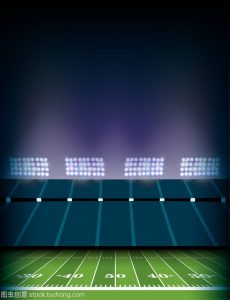 Selection requirements of rugby pitch light source
Selection requirements of rugby pitch light source
- The light source should be able to ignite stably, have good photoelectric characteristics, and the service life should meet the requirements of the current national relevant product standards. For outdoor rugby stadiums, metal halide lamps can also be used. LED lamps can also be used.
- Indoor stadiums with lower ceilings and smaller areas should use straight-tube fluorescent lamps, low-power metal halide lamps and LED lights. Special venues can use explosion-proof LED sports lighting.
- The power of the light source should be compatible with the size, installation position and height of the playing field. It should ensure that the light source works uninterrupted or starts quickly.
- The light source should have suitable color temperature, good color rendering, high light efficiency, long life and stable ignition and photoelectric characteristics. Emergency lighting should use light sources such as LED lights that can ignite quickly.
- The relevant color temperature of the light source should also meet the lighting requirements! The color temperature of the light source should not be greater than 6000K.
Rugby pitch lighting fixture selection
A few years ago, the lighting of rugby stadiums was generally metal halide, but in the process of use, problems continued, causing considerable trouble to the rugby stadium! Frequent quality problems such as glare, external light, and heating of the lamps have seriously affected the performance of professional rugby games. Since then, the stadium has upgraded the rugby field lighting, replacing metal halide lamps with more advanced LED sports lighting.
Difference between traditional metal halide lamps and LED
1. Traditional Rugby stadium metal halide
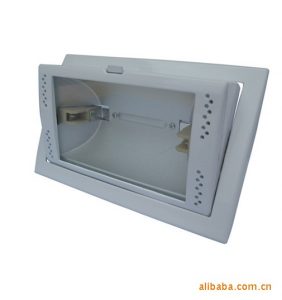 Because the metal halide lamp is a thermal light source; the temperature of the shell of the metal halide lamp is very high, which can exceed 130 degrees; the power of the metal halide lamp light source is large, and the annual power consumption cost is large. Secondly, the metal halide light is seriously attenuated, and the illuminance in the middle and late life of the light source is not enough. During the lighting process, there is a flicker phenomenon, and the operator’s vision is easily fatigued. For example, the speed of the equipment in the lighting site is the same or similar to the number of fluctuations of the light emitted by the light source, which is prone to safety accidents. Metal halide lamps dissipate excess energy through infrared and ultraviolet rays, and infrared and ultraviolet rays will affect quality and affect human physiology; the filaments and bulbs of metal halide lamps are easily damaged and have poor vibration resistance; metal halide lamps The service life is generally only 8,000 hours, the replacement and maintenance costs are high, and the normal work in the site will be greatly affected during the replacement of the light source. Metal halide lamps have difficult light distribution performance, large waste, uneven light spots, large reflectors, and large luminaires. Metal halide lamps vary in power with the voltage fluctuation of the power grid and are easily overloaded. Metal halide lamps have a low power factor. After compensation, it is about 0.85, and especially the harmonic content is relatively large, which has a serious impact on the power grid and is not conducive to maintenance.
Because the metal halide lamp is a thermal light source; the temperature of the shell of the metal halide lamp is very high, which can exceed 130 degrees; the power of the metal halide lamp light source is large, and the annual power consumption cost is large. Secondly, the metal halide light is seriously attenuated, and the illuminance in the middle and late life of the light source is not enough. During the lighting process, there is a flicker phenomenon, and the operator’s vision is easily fatigued. For example, the speed of the equipment in the lighting site is the same or similar to the number of fluctuations of the light emitted by the light source, which is prone to safety accidents. Metal halide lamps dissipate excess energy through infrared and ultraviolet rays, and infrared and ultraviolet rays will affect quality and affect human physiology; the filaments and bulbs of metal halide lamps are easily damaged and have poor vibration resistance; metal halide lamps The service life is generally only 8,000 hours, the replacement and maintenance costs are high, and the normal work in the site will be greatly affected during the replacement of the light source. Metal halide lamps have difficult light distribution performance, large waste, uneven light spots, large reflectors, and large luminaires. Metal halide lamps vary in power with the voltage fluctuation of the power grid and are easily overloaded. Metal halide lamps have a low power factor. After compensation, it is about 0.85, and especially the harmonic content is relatively large, which has a serious impact on the power grid and is not conducive to maintenance.
Professional Rugby Stadium Lights-LED Lights
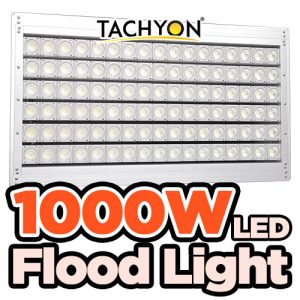 AS LED lights have many advantages, in recent years, rugby stadiums in various countries have adopted LED lights instead of metal halide lamps. LED is a green light source. LED lights are DC driven, no flicker, and will not cause discomfort to the eyes of athletes or spectators during competitions; no infrared and ultraviolet components, led lights are environmentally friendly, and no harmful substances of mercury. No radiation pollution. Will not cause any harm to the human body. The temperature of the shell of the LED lamp is extremely low, normally below 75 degrees. The decrease in the temperature of the LED shell can greatly increase the safety and life of cables, wires, and supporting electrical appliances. Can play a role in saving energy and saving money in lighting costs. The light source of the LED lamp is an electronic component, which is inherently anti-vibration. LED lamps have incomparable advantages in terms of vibration resistance. Waterproof and shockproof; low loss and long life. Low voltage operation, safe and reliable use. Reducing maintenance times also reduces maintenance costs. The solid state package of the led lamp belongs to the cold light source type. So it is easy to transport and install, and can be installed in any miniature and enclosed equipment without fear of vibration. Therefore, in outdoor occasions, it can not only be waterproof, windproof, and shockproof. These advantages are the key factors for the stadium to decide to use LED lights.
AS LED lights have many advantages, in recent years, rugby stadiums in various countries have adopted LED lights instead of metal halide lamps. LED is a green light source. LED lights are DC driven, no flicker, and will not cause discomfort to the eyes of athletes or spectators during competitions; no infrared and ultraviolet components, led lights are environmentally friendly, and no harmful substances of mercury. No radiation pollution. Will not cause any harm to the human body. The temperature of the shell of the LED lamp is extremely low, normally below 75 degrees. The decrease in the temperature of the LED shell can greatly increase the safety and life of cables, wires, and supporting electrical appliances. Can play a role in saving energy and saving money in lighting costs. The light source of the LED lamp is an electronic component, which is inherently anti-vibration. LED lamps have incomparable advantages in terms of vibration resistance. Waterproof and shockproof; low loss and long life. Low voltage operation, safe and reliable use. Reducing maintenance times also reduces maintenance costs. The solid state package of the led lamp belongs to the cold light source type. So it is easy to transport and install, and can be installed in any miniature and enclosed equipment without fear of vibration. Therefore, in outdoor occasions, it can not only be waterproof, windproof, and shockproof. These advantages are the key factors for the stadium to decide to use LED lights.
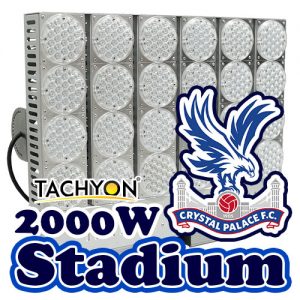 The LED light line is very easy to control, and can achieve a variety of light distribution under the same volume, and the spot light has uniform illumination. The convenience of LED light distribution can greatly save the waste of light in the light distribution and improve the system light efficiency of the light. LED lamps can work normally during the fluctuation of the grid voltage from 90-265 volts, and have no effect on the life of the light source and the lamp. Constant current power drive can keep the light source power constant and stable when the grid voltage fluctuates. Efficient power saving, more than 65% power saving than fluorescent lamps. White LED consumes only 1/10 of the energy of incandescent lamps, 1/4 of energy-saving lamps, and has a life span of more than 100,000 hours. If an ultra-bright and high-power LED light source is used, combined with a high-efficiency power source, it can save electricity than traditional incandescent lamps Above 80%, the brightness at the same power is 10 times that of incandescent lamps, and its long life span is more than 50,000 hours, which is more than 50 times that of traditional tungsten filament lamps. LED adopts highly reliable advanced packaging technology-eutectic welding, which fully guarantees the long life of LED. One installation can be used for 10 years. The life of ordinary LED lights can be used for more than 50,000 hours, and there are some special LED lights that can reach 100,000 hours. Of course, there are two factors in determining the life of the LED lamp: the chip and the driver. However, because the LED lamp does not have the problem of filament fusing, the life of the LED lamp is much longer than other lamps.
The LED light line is very easy to control, and can achieve a variety of light distribution under the same volume, and the spot light has uniform illumination. The convenience of LED light distribution can greatly save the waste of light in the light distribution and improve the system light efficiency of the light. LED lamps can work normally during the fluctuation of the grid voltage from 90-265 volts, and have no effect on the life of the light source and the lamp. Constant current power drive can keep the light source power constant and stable when the grid voltage fluctuates. Efficient power saving, more than 65% power saving than fluorescent lamps. White LED consumes only 1/10 of the energy of incandescent lamps, 1/4 of energy-saving lamps, and has a life span of more than 100,000 hours. If an ultra-bright and high-power LED light source is used, combined with a high-efficiency power source, it can save electricity than traditional incandescent lamps Above 80%, the brightness at the same power is 10 times that of incandescent lamps, and its long life span is more than 50,000 hours, which is more than 50 times that of traditional tungsten filament lamps. LED adopts highly reliable advanced packaging technology-eutectic welding, which fully guarantees the long life of LED. One installation can be used for 10 years. The life of ordinary LED lights can be used for more than 50,000 hours, and there are some special LED lights that can reach 100,000 hours. Of course, there are two factors in determining the life of the LED lamp: the chip and the driver. However, because the LED lamp does not have the problem of filament fusing, the life of the LED lamp is much longer than other lamps.
Attention in Rugby field lighting installation
1. Power supply
The first requirement of a power supply is a product with high efficiency and high efficiency. When the heat is low, the stability is necessarily high. Generally, there are two methods of isolation and non-isolation in the power supply section. The isolation volume is relatively large and the efficiency is low. In use, there will be many problems in installation. It is not as good as the market prospect of non-isolated products. Here we mainly discuss non-isolation. Driving scheme.
2. LED light source
The LED light source adopting Taiwan’s patented structure of the LED light source, the chip is placed on the pin, and the heat generated by the chip node directly passes the thermal energy through the silver pin, which is the same as the traditional in-line product and the traditional patch product in terms of heat dissipation. There are qualitative differences, and the node temperature of the chip will not be accumulated, thereby ensuring the good usability of the light source lamp beads, ensuring the long life of the light source lamp beads, and low light attenuation. Traditional patch products, although the positive and negative electrodes of the chip can be connected through the gold wire of the chip, and the thermal energy generated by the chip is connected to the silver pin through the gold wire. Both heat and electricity are conducted by money, and the heat accumulation time is long. Will directly affect the life of the LED fluorescent tube.
3. Heat dissipation
Introducing and applying infrared radiation heat to fluorescent lamps is an important means to improve the service life of lamps. In the consideration of heat dissipation, we separate the heat dissipation of the LED light source lamp beads and the heat dissipation of the power supply without interfering with each other, thereby ensuring the rationality of heat dissipation. There are three ways of heat conduction, convection, conduction and radiation. In a closed environment, the possibility of convection and conduction is relatively small, and the radiation of heat through radiation is the focus of fluorescent tubes.
4. Security
Safety, here mainly refers to PC flame retardant plastic tube, because infrared heat can penetrate the PC tube, then we design and consider the safety of LED lamps when using them, using full plastic physical insulation, even when using non- The isolated power supply can also ensure the safety of use.
Conclusion
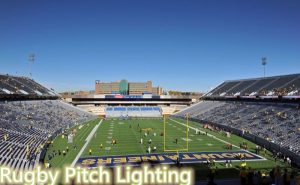 LED is a new generation of green lighting system. LED lights can minimize light pollution to the surrounding environment, effectively prevent external light and glare, reduce the amount of light shining outside the venue as much as possible, protect the beautiful night sky, and also provide athletes and spectators Provide rugby field lighting to create a more comfortable playing and viewing environment. The quality of LED lighting mainly depends on the illumination level, illumination uniformity and the degree of glare control. The level of lighting required by athletes is different from that of spectators. For athletes, the level of lighting required is relatively low, and the purpose of the audience is to watch the game. The lighting requirements increase with the increase in viewing distance. In the future, high-efficiency and energy-saving light sources, as well as matching energy-efficient energy-saving lamps and electrical accessories, should be selected, and should comply with the current national energy efficiency standards. Reactive power compensation for gas discharge light sources should be distributed. The power factor after compensation for fluorescent lamps should not be lower than 0.9, high-intensity gas discharge lamps should not be lower than 0.85; the power factor of LED lamps should not be lower than 0.9. The lighting of the training venues should use LED lights suitable for color temperature and anti-glare design. The lighting control mode should be set reasonably according to different use functions. The utilization rate of the field lighting beam should be improved, and the spillover light of the field lighting should be controlled. Natural lighting shall be fully utilized for lighting, and measures shall be taken to reduce and avoid the high brightness and shadows caused by natural light from causing a strong contrast to the playing field. Because LED is a cold light source, semiconductor lighting itself does not have any pollution to the environment. Compared with incandescent lamps and fluorescent lamps, the power saving efficiency can reach more than 90%. At the same brightness, the power consumption is only 1/10 of that of ordinary incandescent lamps and 1/2 of that of fluorescent tubes. If we replace 50% of our current traditional lighting with LEDs, the electricity saved in China each year is equivalent to the total power generated by a Three Gorges Power Station, and its energy saving benefits are considerable.
LED is a new generation of green lighting system. LED lights can minimize light pollution to the surrounding environment, effectively prevent external light and glare, reduce the amount of light shining outside the venue as much as possible, protect the beautiful night sky, and also provide athletes and spectators Provide rugby field lighting to create a more comfortable playing and viewing environment. The quality of LED lighting mainly depends on the illumination level, illumination uniformity and the degree of glare control. The level of lighting required by athletes is different from that of spectators. For athletes, the level of lighting required is relatively low, and the purpose of the audience is to watch the game. The lighting requirements increase with the increase in viewing distance. In the future, high-efficiency and energy-saving light sources, as well as matching energy-efficient energy-saving lamps and electrical accessories, should be selected, and should comply with the current national energy efficiency standards. Reactive power compensation for gas discharge light sources should be distributed. The power factor after compensation for fluorescent lamps should not be lower than 0.9, high-intensity gas discharge lamps should not be lower than 0.85; the power factor of LED lamps should not be lower than 0.9. The lighting of the training venues should use LED lights suitable for color temperature and anti-glare design. The lighting control mode should be set reasonably according to different use functions. The utilization rate of the field lighting beam should be improved, and the spillover light of the field lighting should be controlled. Natural lighting shall be fully utilized for lighting, and measures shall be taken to reduce and avoid the high brightness and shadows caused by natural light from causing a strong contrast to the playing field. Because LED is a cold light source, semiconductor lighting itself does not have any pollution to the environment. Compared with incandescent lamps and fluorescent lamps, the power saving efficiency can reach more than 90%. At the same brightness, the power consumption is only 1/10 of that of ordinary incandescent lamps and 1/2 of that of fluorescent tubes. If we replace 50% of our current traditional lighting with LEDs, the electricity saved in China each year is equivalent to the total power generated by a Three Gorges Power Station, and its energy saving benefits are considerable.


